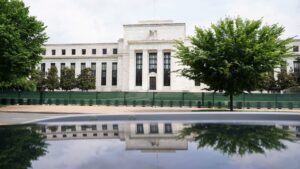Welcome to Extreme Investor Network, where we provide you with expert insights and unique perspectives on personal finance topics that matter most to you.
In recent news, the signs of cooling inflation are paving the way for the Federal Reserve to cut rates when it meets next week. This news comes as a relief to many Americans struggling to keep up with the rising cost of living and high interest charges.
As Brett House, an economics professor at Columbia Business School, mentioned, while an interest rate reduction is positive news for consumers, it may not deliver immediate relief. The spike in interest rates following the Covid-19 pandemic has put significant pressure on many households, leading to high borrowing costs.
Greg McBride, chief financial analyst at Bankrate.com, highlighted that the Federal Reserve’s decision to cut interest rates is based on the progress made in controlling inflation. This move is expected to have a minimal impact initially, with a quarter percentage point rate cut. However, McBride emphasized that a series of rate cuts over time will eventually lead to more significant reductions in borrowing costs.
The markets are already pricing in a 100% probability of rate cuts by the Fed, with potential aggressive moves later this year. This could bring the Fed’s benchmark federal funds rate down to below 4% by the end of 2025. While these rate cuts may not immediately reshape the economy, they will have an impact on various financial products, including credit cards, mortgages, auto loans, student loans, and savings rates.
For credit card holders, the rate cuts will gradually bring down high-interest rates, but switching to a 0% balance transfer card and aggressively paying down balances is still the best strategy. Mortgage rates have already started to fall, providing some relief to homebuyers, while auto loan rates are expected to head lower as well.
If you have student loans, federal loan rates remain fixed, but private loan rates may see reductions following the Fed’s interest rate cuts. However, it’s essential to consider the trade-offs of refinancing federal loans into private loans, as you may lose out on certain protections and repayment options.
When it comes to savings rates, changes in the target federal funds rate can influence deposit rates. While the anticipation of rate cuts may lead to a decrease in deposit rates, it’s crucial to focus on earning a return that outpaces inflation by placing your money in the right savings account.
At Extreme Investor Network, we strive to provide you with in-depth analysis and valuable insights to help you navigate the complex world of personal finance. Stay tuned for more updates and expert tips on managing your finances effectively. Subscribe to our newsletter to receive the latest news and articles directly to your inbox.

